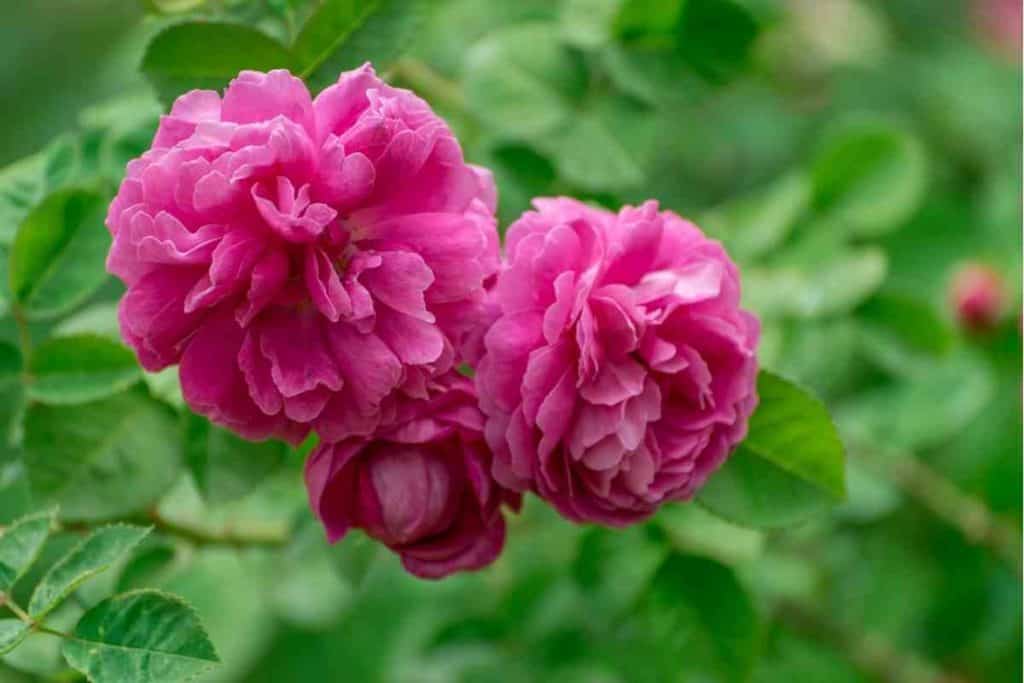Roses are among the most attractive of flowers, often being associated with mystery and romance.
Roses are sought after plants due to their aesthetic value but also because of the many uses that they provide. The produce of roses serves as an ingredient for beauty products or entertainment events.
Many people know the plant for their production of rose oil, whose major employment is in the fragrance industry. The prices rose oil can fetch make it an attractive prospect for farmers and gardeners who grow roses commercially.
Roses are a popular flower to grow, but they can be tricky to care for.
This article will look at the various rose growing stages and other things you should know when growing rose plants.
Table of Contents
When Is the Best Time to Plant Roses?
Roses are best planted either in Spring (Between March and May) or Fall (Between September and December).
Early planting of roses is advisable so that their roots can be well established before they become dormant in winter (Between December and March).
Read Also: Carrots Growing Stages
How Long Do Roses Take To Grow?

Generally, Roses are easy-to-look-after plants and, once established, can survive some harsh weather/conditions.
However, Roses are sensitive when they are young and newly planted, so they need conventional watering and attention.
Under favorable environments, Roses take about 2 years to grow to maturity and become established.
Rose Growing Stages
Roses are perennial plants, which means they live for more than one year. Planting a rose bush is a beautiful way to spend a Saturday evening; here are the different rose growing stages you should be familiar with.
Stage 1: Seeds
Rose seeds germinate inside the rosehip, found in the rose brush's fruit.
Rose hips form from beneath the blossom. Throughout the summer, the hips turn red, yellow, or orange, and by October, they are brimming with seeds.
"Achene" is the botanical term for rose seeds. They are creamy-white and take 8 to 12 weeks to grow.
Stage 2: Propagation
Roses grown from seed lack the traits of the original plant.
The most dependable approach to duplicate a certain rose plant is through grafting or root cutting. Root cuttings are grown in perlite with the addition of a rooting hormone to promote growth.
Cultivars are chosen for their robust growth patterns, disease resistance, blooms, fragrance, and other qualities. To promote strong development, rose cuttings can also be grafted onto sturdy rootstock.
Stage 3: Young Plants

During the dormant winter season, roses are sold bare-root.
Roses receive grades of 1, 1½, and 2 from the American Nursery Standards. Three or more 34-inch-diameter canes characterize Grade 1 rose plants.
When they are collected from the field, they must be at least two years old. Two heavy canes are provided in Grade 1½, whereas little canes are provided in Grade 2.
Because of their consistent, powerful growth, we endorse acquiring grade 1 roses.
Read Also: 4 Different Cauliflower Growing Stages
Stage 4: Growing Season
Before growth begins, bare root roses are planted from January to April.
They do well in a garden with at least six hours of direct sunlight every day and well-draining soil. They despise soggy, wet roots. Organic compost should be added to the soil to improve drainage and nutrient value.
As the weather warms in late spring, plants begin to sprout leaves, buds, and flowers. During the summer, they continue to develop and blossom.
Stage 5: Dormancy
Even when the weather is mild, roses go dormant in the winter.
As winter approaches, their leaves turn yellow, brown, and red, and their stalks become spindly.
To promote rapid growth the following year, they must be cut to within 2 to 3 feet of the ground. Pruning rambling roses and climbers after they have bloomed is also beneficial.
Frequently Asked Questions
Do Roses have a lifespan?
According to New Mexico State University, the average lifespan of a rose shrub is 15 years. If your old rose isn't doing well, it could be time to replace it. If your rose still has a few years to live, you can take action to bring it back to life.
Do Roses bloom the first year?
Roses that are newly planted will bloom in their first year, but the quantity and quality of the blooms will vary depending on whether the plant is cultivated in a container or bare-root.
Roses planted in containers have a better-established root system, as well as a stronger crown and canes, resulting in more flowers in their first year.
Bare-root roses lag behind their container-grown counterparts in terms of development, and while they may produce a bud or two in their first year, it will take 2 or 3 years for them to produce numerous blooms.
Is it Difficult to Grow Roses?
Rose care is simpler than you would think—they can be grown by anyone. Plant your roses in a sunny, well-drained spot. Fertilize them regularly to ensure beautiful blooms.
What month do rose bushes bloom?
The rose is June's natal flower! It's not unexpected because rose shrubs are at their peak during this month, but several varieties bloom from late May to early September. Climbing roses and miniature rose plants are among the many varieties of rose bushes available.
How many Roses do you get per plant?
Roses produce between 25 and 30 blossoms per plant. An acre of roses yields roughly 150,000 roses if 5,000 plants are planted on average.
Conclusion: Growing Stages of Rose Plants
Roses are the "garden's queen" and one of the world's oldest cultivated flowers. Roses have been found in the fossil record dating back 35 million years.
They are a global love sign that may be found in a variety of shapes, colors, and sizes.
Roses are tough and can withstand a lot of abuse, but they thrive when given proper care during their growing season.
Read Also: 3 Different Stages of Growing Asparagus




